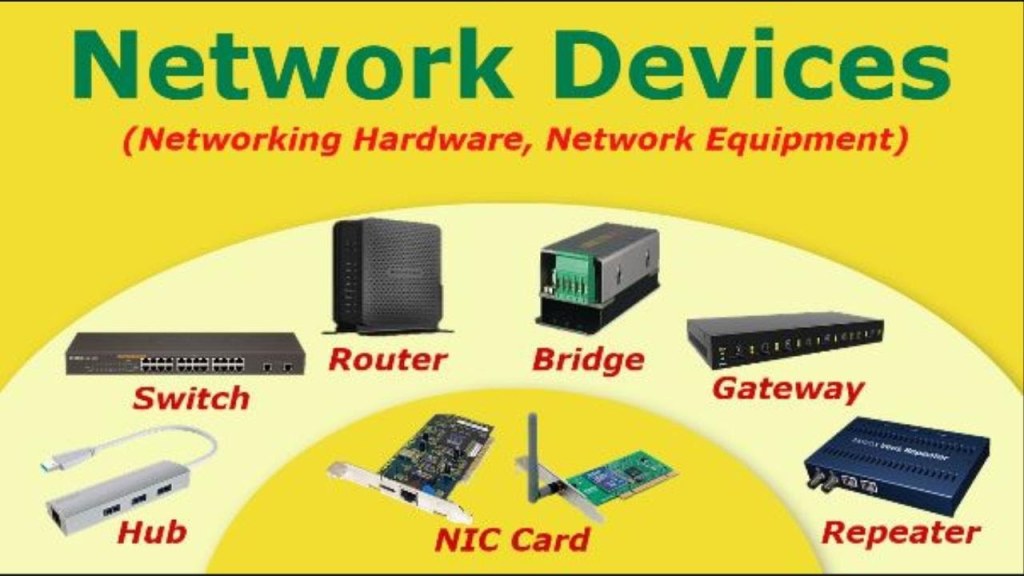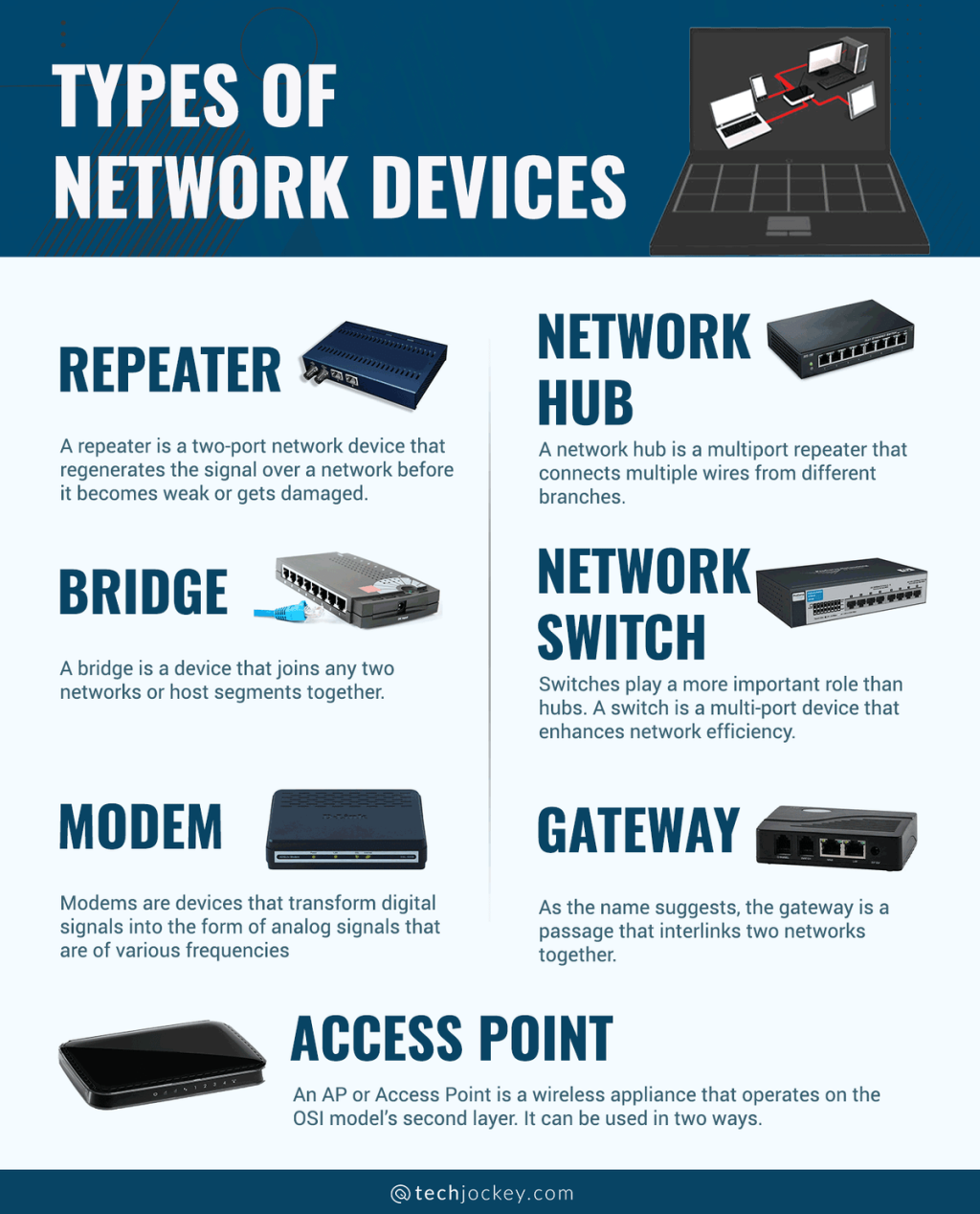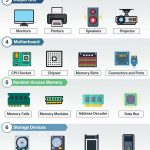Unleash Your Network Potential With Cutting-Edge Computer Hardware For Networking!
Computer Hardware for Networking
Greetings, Readers! Today, we will delve into the fascinating world of computer hardware for networking. In this article, we will explore the various components and equipment that make up a robust network infrastructure. Whether you are a networking enthusiast or simply curious about how these systems work, this article will provide valuable insights and information. So, let’s dive in and discover the wonders of computer hardware for networking!
Introduction
3 Picture Gallery: Unleash Your Network Potential With Cutting-Edge Computer Hardware For Networking!



Networking forms the backbone of modern communication systems. It enables the exchange of data and information between devices, facilitating seamless connectivity on a global scale. At the heart of any network lies its hardware components, which include routers, switches, modems, and cables. These components work together to establish and maintain reliable connections. In the following sections, we will explore each of these hardware elements in detail, discussing their functions, importance, and how they contribute to the overall network infrastructure.
Routers: The Gateways of Networks
Routers play a crucial role in networking by directing and forwarding data packets between different networks. Acting as the central hub, they determine the most efficient path for data transmission, ensuring that information reaches its destination quickly and securely. With advanced features such as Quality of Service (QoS) and Network Address Translation (NAT), routers provide essential functionalities that optimize network performance and security.

Image Source: slideserve.com
🔑 Key Point: Routers are the backbone of network connectivity, directing data packets and ensuring efficient transmission.
Switches: The Traffic Managers
Switches are essential components that enable the smooth flow of data within a local network. They connect multiple devices, such as computers, printers, and servers, allowing them to communicate with each other. Switches intelligently manage network traffic by creating dedicated connections between devices, optimizing data transfer speeds and minimizing congestion. With features like VLANs and port mirroring, switches offer enhanced security and monitoring capabilities.
🔑 Key Point: Switches enable efficient communication within a local network, managing traffic and enhancing security.
Modems: Bridging Networks and the Internet

Image Source: ytimg.com
Modems serve as the bridge between computer networks and the internet. They facilitate the conversion of digital data from computers into analog signals that can be transmitted over telephone lines or cable systems. Modems also perform the reverse process, converting analog signals back into digital data for computers to interpret. With the advent of broadband technology, modems have evolved to support high-speed internet connections, enabling faster and more reliable network access.
🔑 Key Point: Modems bridge the gap between computer networks and the internet, allowing seamless connectivity.
Cables: The Lifelines of Networking
Cables are the physical medium through which data travels in a network. They carry electrical signals, enabling the transfer of information between devices. Different types of cables, such as Ethernet, coaxial, and fiber optic, offer varying levels of speed, bandwidth, and resistance to interference. Choosing the right cable for a network is crucial to ensure optimal performance and reliability.
🔑 Key Point: Cables are the lifelines of networking, carrying data signals between devices and ensuring seamless communication.
What, Who, When, Where, Why, and How of Computer Hardware for Networking

Image Source: techjockey.com
1. What is computer hardware for networking?
Computer hardware for networking refers to the physical components and equipment that enable the establishment and functioning of computer networks. These components include routers, switches, modems, and cables.
2. Who uses computer hardware for networking?
Computer hardware for networking is utilized by various individuals and organizations, ranging from home users to large enterprises. Network administrators, IT professionals, and technology enthusiasts rely on this hardware to create and maintain robust network infrastructures.
3. When is computer hardware for networking necessary?
Computer hardware for networking is necessary whenever there is a need for multiple devices to communicate and exchange data. It is essential in both personal and professional settings, enabling seamless connectivity and efficient information transfer.
4. Where is computer hardware for networking used?
Computer hardware for networking is used in a wide range of environments, including homes, offices, schools, data centers, and internet service providers. It is integral to the functioning of local area networks (LANs), wide area networks (WANs), and the internet.
5. Why is computer hardware for networking important?
Computer hardware for networking is important as it forms the foundation of communication systems. It enables devices to connect, share resources, and access the internet. Without proper hardware components, networks would fail to function effectively, hampering productivity and hindering information flow.
6. How does computer hardware for networking work?
Computer hardware for networking works by establishing connections between devices and facilitating the transmission of data. Routers direct data packets, switches manage traffic within local networks, modems bridge the gap between networks and the internet, and cables carry data signals between devices.
Advantages and Disadvantages of Computer Hardware for Networking
1. Advantages of Computer Hardware for Networking:
– Enhanced connectivity: Networking hardware allows devices to connect seamlessly, enabling efficient communication and resource sharing.
– Improved productivity: With reliable network infrastructure, organizations can enhance collaboration and streamline their operations, leading to increased productivity.
– Scalability: Computer hardware for networking offers the flexibility to expand networks as per the growing needs of businesses, providing scalability and adaptability.
– Centralized management: Networking hardware allows for centralized management of devices, enabling administrators to efficiently control and monitor the network.
– Access to internet resources: By utilizing networking hardware, users can access a vast array of internet resources, including websites, cloud services, and online applications.
2. Disadvantages of Computer Hardware for Networking:
– Cost: Setting up and maintaining a network infrastructure involves expenses related to purchasing hardware components, cables, and ongoing maintenance.
– Security vulnerabilities: Networks can be susceptible to security breaches, necessitating robust security measures to protect sensitive data and prevent unauthorized access.
– Complexity: Networking hardware requires technical expertise and knowledge for proper installation, configuration, and troubleshooting.
– Reliance on external factors: Network performance can be affected by external factors such as internet service provider (ISP) issues, power outages, or physical damage to cables.
– Compatibility issues: Ensuring compatibility between different hardware components and software applications can be a challenge, requiring careful planning and integration.
Frequently Asked Questions (FAQ)
1. Q: What is the difference between a router and a switch?
A: Routers connect different networks and direct data packets, while switches manage traffic within a local network.
2. Q: Can I use any cable for networking?
A: Different types of cables offer varying levels of speed and performance. It is essential to choose the appropriate cable based on your network’s requirements.
3. Q: How can I secure my network?
A: Network security measures include using firewalls, implementing strong passwords, enabling encryption, and regularly updating software and firmware.
4. Q: Can I set up a network without a modem?
A: A modem is required to establish a connection between your local network and the internet. Without a modem, accessing the internet would not be possible.
5. Q: What is the lifespan of networking hardware?
A: The lifespan of networking hardware varies depending on factors such as usage, quality, and technological advancements. Regular maintenance and upgrades can extend their lifespan.
Conclusion
In conclusion, computer hardware for networking plays a vital role in establishing and maintaining efficient communication systems. Routers, switches, modems, and cables work together to create robust network infrastructures, enabling seamless connectivity and data transfer. While networking hardware offers numerous advantages, it also poses challenges such as cost, security vulnerabilities, and complexity. By understanding the intricacies of computer hardware for networking, individuals and organizations can make informed decisions to build reliable and secure networks that meet their specific needs.
Final Remarks
Building and maintaining a network infrastructure requires careful planning, technical expertise, and ongoing maintenance. It is important to stay updated with the latest advancements in networking hardware and security practices to ensure optimal network performance and protection. Remember to consult professionals and conduct thorough research before making any decisions related to computer hardware for networking. Happy networking!
This post topic: Electronics


